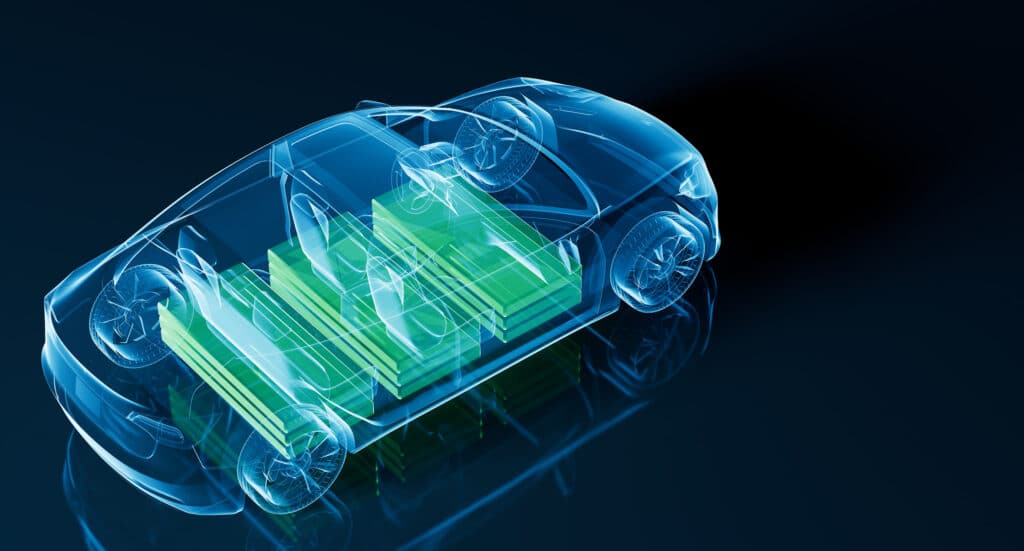EV Range: How Far Can You Go?
July 24, 2023
When choosing an electric vehicle (EV), one of the first things you should consider is its driving range. And no, we’re not talking about a golf driving range, but rather the distance your vehicle can travel on a single charge. This is a concept that most folks are still getting used to and was not a heavy concern for gasoline vehicles. There are gas stations just around nearly every corner of the United States. The same cannot be said for charging stations. The technology for electric charging is relatively new, and the infrastructure on our roadways is still catching up to that of gasoline.
Dealing with Range Anxiety in 2023
EV owners often worry about range anxiety, which is the fear of running out of power before reaching their destination or a charging station. However, with the advancements in EV technology and infrastructure, this concern is becoming less of an issue.
The driving ranges of electric vehicles have significantly improved over the years. Many new EV models offer ranges that comfortably exceed the daily driving distance of most Americans. For instance, several 2023 models boast ranges between 200 and 300 miles on a single charge, with some even exceeding that.
Planning your route with charging stations in mind can alleviate range anxiety. Many navigation systems, including those in EVs, now have the option to show charging stations along your route. There are also numerous apps available that can help you locate charging stations, provide real-time availability, and even initiate charging sessions.
Moreover, the charging infrastructure is rapidly expanding. Public charging stations are becoming more commonplace, not just in urban areas but also along highways and at popular destinations. Many workplaces and residential buildings are also adding charging stations.
In the unlikely event that you do run out of power, roadside assistance services are increasingly equipped to handle EVs. Some services can quickly charge your vehicle or tow it to a nearby charging station.
While range anxiety is a valid concern, the reality is that with a little planning and awareness, it’s quite manageable. EV ownership is becoming more viable and exciting with the growing charging infrastructure, improved EV ranges, and useful tools for finding charging stations.
How far can an electric car go on one charge?
If you’re thinking about switching to an electric vehicle in the Portland Metro area, you’re probably wondering, how far can I actually go?
This is an important factor to consider, as it directly impacts your driving habits, travel plans, and charging strategy. As of 2023, most new EVs can travel between 200 and 300 miles on a full charge. However, some models can exceed this range, while others may fall slightly short.
Here are a few examples of 2023 EV models and their estimated ranges:
| Model | Manufacturer | Estimated Range |
|---|---|---|
| EV6 | Kia | 300 miles |
| F-150 Lightning | Ford | 230-300 miles |
| ID.4 | Volkswagen | 275 miles |
| IONIQ 5 | Hyundai | 220 miles / 269 miles |
| Ariya | Nissan | 304 miles |
The estimated driving range may vary depending on driving conditions, load, weather, and driving style.
For potential EV buyers in the Portland Metro area, these ranges mean that most daily driving needs can be comfortably met with a single charge. For example, the average commute in the United States is less than 30 miles round trip, which is well within the range of most modern EVs. This means at max you could make a 30-mile commute close to 10 times before recharging. This is of course in ideal conditions, so you may need to charge up before then based on your driving that week.

Furthermore, with the growing network of charging stations in the Portland Metro area and throughout the Pacific Northwest, longer trips are becoming increasingly feasible. Most new electric vehicles are capable of easily completing a trip from Portland to Seattle (approximately 173 miles) or to Eugene (approximately 111 miles) on a single charge.
| Destination | Distance (miles) |
|---|---|
| Seattle, WA | 173 |
| Vancouver, WA (Downtown) | 8.7 |
| Eugene, OR | 111 |
| Bend, OR | 176.3 |
| Spokane, WA | 351.6 |
| Vancouver (Canada) | 315.1 |
When considering an EV, it’s important to think about your typical driving habits, the availability of charging infrastructure in your area and along your typical routes, and the specific range of the EV models you’re considering. Remember, the goal is to find an EV that fits your lifestyle and meets your driving needs.
Range Standards
So how do we get range estimations for cars in the first place? When researching electric vehicles, you’ll often come across different range standards. These are testing procedures used around the world to measure the range and efficiency of vehicles, including electric vehicles. Here’s a brief overview of the most common standards you might encounter.
The Old Standard: The New European Driving Cycle (NEDC)
The New European Driving Cycle (NEDC) was used in Europe for many years for the assessment of the emission levels of car engines. However, it has been widely criticized for being unrepresentative of real-world driving, leading to a gap between official and real-world fuel consumption and CO2 emissions. The NEDC was replaced by the WLTP in 2017, but you may still see NEDC figures quoted, particularly for older vehicles.
Global Standard: The Worldwide Harmonised Light Vehicle Test Procedure (WLTP)
The Worldwide Harmonised Light Vehicle Test Procedure (WLTP) is a global standard for determining the levels of pollutants, CO2 emissions, and fuel consumption of vehicles, as well as the range of fully electric cars. Introduced in 2017, the WLTP is based on real-driving data and is therefore more representative of everyday driving profiles.
The WLTP cycle is divided into four parts with different average speeds: low, medium, high, and extra high. Each part contains a variety of driving phases, stops, acceleration, and braking phases. This allows the WLTP to better represent everyday driving profiles.
US Standard: The Environmental Protection Agency (EPA) Testing Standards
In the United States, the Environmental Protection Agency (EPA) sets the testing standards for vehicle emissions, fuel economy, and EV range. The EPA’s tests are generally considered to be the most realistic and the strictest of the three major testing standards.
The EPA’s testing procedure for electric vehicles includes five different driving conditions: city driving, highway driving, a combination of city and highway driving, high-speed driving with rapid acceleration and braking, and cold-weather driving with the heater on. This variety of conditions helps to provide a more accurate estimate of real-world range.
When comparing the range of different electric vehicles, it’s important to check which testing standard has been used, as this can significantly affect the figures. The same vehicle can have different range figures under the WLTP, NEDC, and EPA tests due to the different methodologies used. As a potential EV buyer, understanding these standards can help you make a more informed decision.
Factors Affecting Driving Range for Electric Vehicles
The estimated driving range for your EV is only half of the story. There are a many variables that impact how much juice you end up using on a drive. Here are some key factors that can influence the driving range of an electric vehicle:
Driving Speed
The speed at which you drive your electric vehicle can have a significant impact on its range. This is similar to gas vehicles – the faster you drive, the more fuel you will use. This effect is more pronounced in electric vehicles at highway speeds due to increased wind resistance and higher power needed to maintain high speeds.
While EVs are generally more efficient at city speeds, their range can decrease more quickly on the highway.
Temperature

Outside temperature is an important factor that can influence the range of an electric vehicle. When the weather is cold, the battery’s capacity can decrease and additionally, more energy may be consumed to warm the vehicle’s interior. Conversely, when the weather is hot, energy may be required to cool the vehicle. Both of these situations can contribute to a decrease in range.
Therefore, it is essential to consider the temperature while driving an EV. One possible solution to mitigate these effects is to pre-condition your vehicle while it’s still plugged in. This process involves heating or cooling the car’s interior before starting your journey, which can reduce the amount of energy consumed during the drive.
Park your electric vehicle in the shade during hot weather to reduce the energy needed to cool the inside.
Electric Powered Features
One important factor to consider when driving an electric vehicle is the impact that electric-powered features have on its range. These features, such as air conditioning, heating, and entertainment systems, draw power from the vehicle’s battery, which reduces the amount of energy available for driving.
This means that the more you use these features, the less range you’ll have available to drive, which is an important consideration when planning trips or considering a vehicle’s suitability for your needs.
It’s worth noting that the impact of these features on range can vary depending on the vehicle and the specific features being used, so it’s important to check the manufacturer’s specifications and conduct your own testing to get a better idea of how these features affect your EV’s range.
The Weight of the Vehicle
The weight of the vehicle is a crucial factor that affects its efficiency. It is important to note that heavier vehicles require more energy to move, which can significantly reduce the driving range. The driving range is an essential aspect of any vehicle, as it determines how far it can travel before it needs to be refueled or recharged. Therefore, it is crucial to consider the weight of the vehicle when designing and manufacturing it.
Additionally, it is not just the weight of the vehicle itself that needs to be considered, but also the weight of any additional load, such as passengers or cargo. This added weight can have a significant impact on the vehicle’s performance and efficiency.
Therefore, it is important to consider the weight of the vehicle and any additional load when making decisions about transportation and logistics. By doing so, we can ensure that we are using our resources in the most efficient and effective way possible, while also minimizing our impact on the environment.

Battery Capacity
The capacity of the vehicle’s battery is a crucial aspect to consider when determining the range of an electric vehicle. The battery acts as the fuel tank of an electric vehicle, and its capacity is directly related to how far you can travel on a single charge. An electric vehicle with a larger battery can store more energy, which in turn allows for a longer driving range. This is an important consideration for those who are looking to travel long distances on a single charge.
Larger batteries are also heavier and more expensive, which can impact the overall performance and cost of the vehicle. In addition, the weight of the battery can affect the handling and agility of the vehicle on the road, which is why many manufacturers strive to strike a balance between battery size and vehicle weight. Overall, the capacity of the battery is a crucial aspect to consider when purchasing an electric vehicle, as it directly impacts the range, performance, and cost of the vehicle.
Understanding these factors can help you maximize your EV’s range and make more informed decisions about which electric vehicle is right for you. Remember, the way you drive and use your vehicle can have a big impact on how far you can go on a single charge.
Calculating EV Range for Plug-In Hybrid Electric Vehicles
Plug-in hybrid electric vehicles (PHEVs) are a type of hybrid electric vehicle that combines a gasoline or diesel engine with an electric motor and a rechargeable battery. Unlike conventional hybrids, PHEVs can be plugged-in and recharged from an outlet, allowing them to drive extended distances using just electricity.
When it comes to calculating the electric range of a PHEV, it’s important to understand that these vehicles have two separate ranges: the electric-only range and the combined (electric + gasoline) range.
- Electric-Only Range: This is the distance the vehicle can travel using only the energy stored in its battery. This range is typically less than that of a fully electric vehicle because PHEVs generally have smaller batteries. The electric-only range can be calculated based on the capacity of the battery (in kilowatt-hours) and the vehicle’s energy consumption rate (in kWh per mile), which is provided by the manufacturer.
- Combined Range: This is the total distance the vehicle can travel using both the electric motor and the gasoline engine. The combined range is calculated by adding the electric-only range to the range provided by the gasoline engine. The latter is calculated by dividing the fuel tank capacity (in gallons) by the vehicle’s fuel economy (in miles per gallon).
For example, if a PHEV has an electric-only range of 30 miles, a fuel economy of 50 miles per gallon, and a fuel tank capacity of 10 gallons, its combined range would be 30 miles (electric) + 500 miles (gasoline) = 530 miles.
Remember, the actual range can vary based on factors such as driving conditions, vehicle load, temperature, and driving style. Also, to maximize the electric-only range, it’s important to charge the vehicle regularly.
Battery Wear and Its Effect on EV Range
Just like the battery in your smartphone or laptop, the battery in an electric vehicle doesn’t stay perfect forever. Over time, the capacity of an EV’s battery can decrease, a phenomenon known as battery degradation. This degradation can lead to a reduction in the vehicle’s driving range.
Battery degradation occurs due to a variety of factors, including the number of charge cycles (a cycle is defined as charging a battery from 0% to 100% and discharging it back to 0%), the manner in which the vehicle is driven, the conditions in which it’s used (extreme temperatures, for example, can accelerate degradation), and the way the battery is managed by the vehicle’s battery management system.
The rate of battery degradation varies by vehicle model and how the vehicle is used. However, studies have shown that, on average, an EV battery will degrade about 1-2% per year. This means that after 5 years, an EV might retain about 90-95% of its original battery capacity, and therefore, its original range.
It’s important to note that most EV manufacturers provide a warranty on their batteries, typically guaranteeing a certain level of capacity (usually around 70-80%) for a certain period (usually around 8 years or 100,000 miles).
While battery degradation is inevitable, there are steps you can take to slow the process and maintain your EV’s range:
- Avoid keeping your battery at 100% charge for extended periods. It’s often recommended to charge to around 80% for daily use and only charge to 100% for long trips.
- Try to avoid letting the battery level drop too low. Regularly charging your EV when it gets to around 20% can help maintain battery health.
- Avoid fast charging regularly. While fast charging is convenient, it can generate heat and accelerate battery degradation. It’s best used for long trips when you need to charge quickly.
- Keep your EV in moderate temperatures when possible. Extreme heat or cold can affect battery health.
Remember, while battery degradation can affect your EV’s range, the impact is typically gradual and should not drastically change your driving experience over the short term. As battery technology continues to improve, we can expect future EVs to have longer-lasting batteries with less degradation over time.
Wrap Up
In conclusion, understanding electric vehicle driving ranges is crucial when considering making the switch to an EV. With advancements in technology, the driving ranges of electric vehicles have significantly improved over the years, and planning your routes with charging stations in mind can alleviate range anxiety. Additionally, the charging infrastructure is rapidly expanding, and many roadside assistance services are increasingly equipped to handle EVs.
At Dick Hannah, we are committed to providing you with the best electric vehicle options possible. Our inventory has a wide range of electric vehicles with various driving ranges to cater to your needs. Whether you are looking for a compact car or a family SUV, we have what you need. Our experienced sales team is always ready to assist you in finding the perfect EV for you. We also offer flexible financing options to make your purchase more affordable. Come visit our dealership today and take a look at our inventory. We are confident that you will find the electric vehicle that will meet your expectations and exceed your needs.
Contact Us